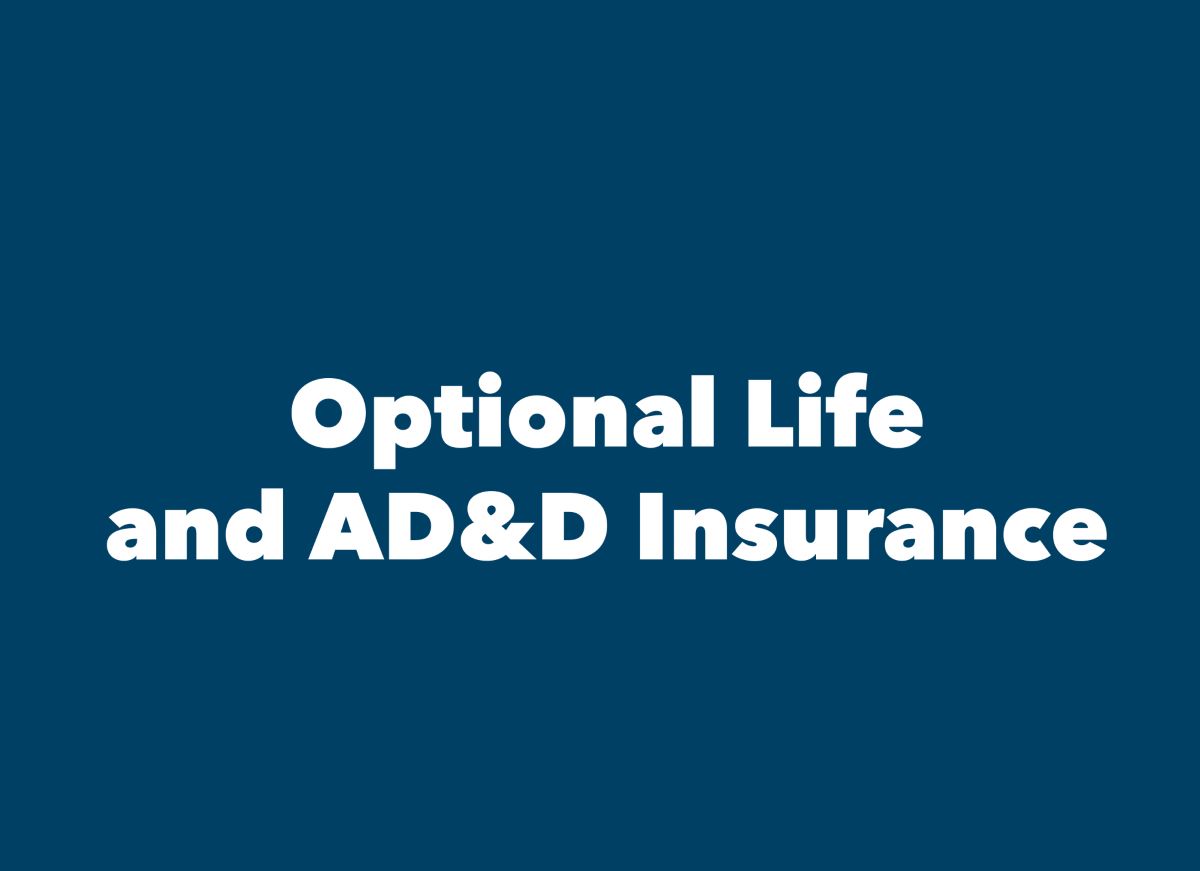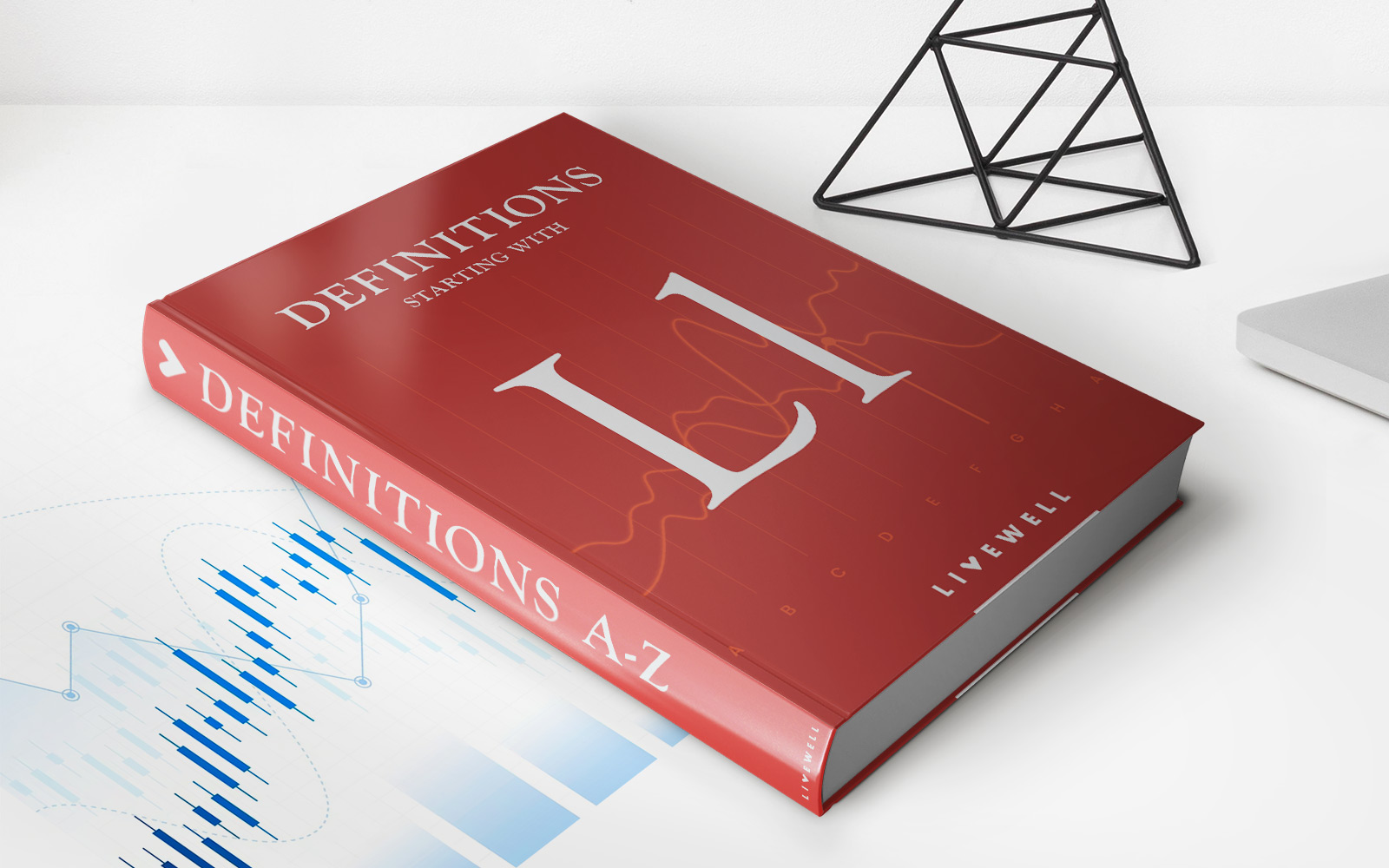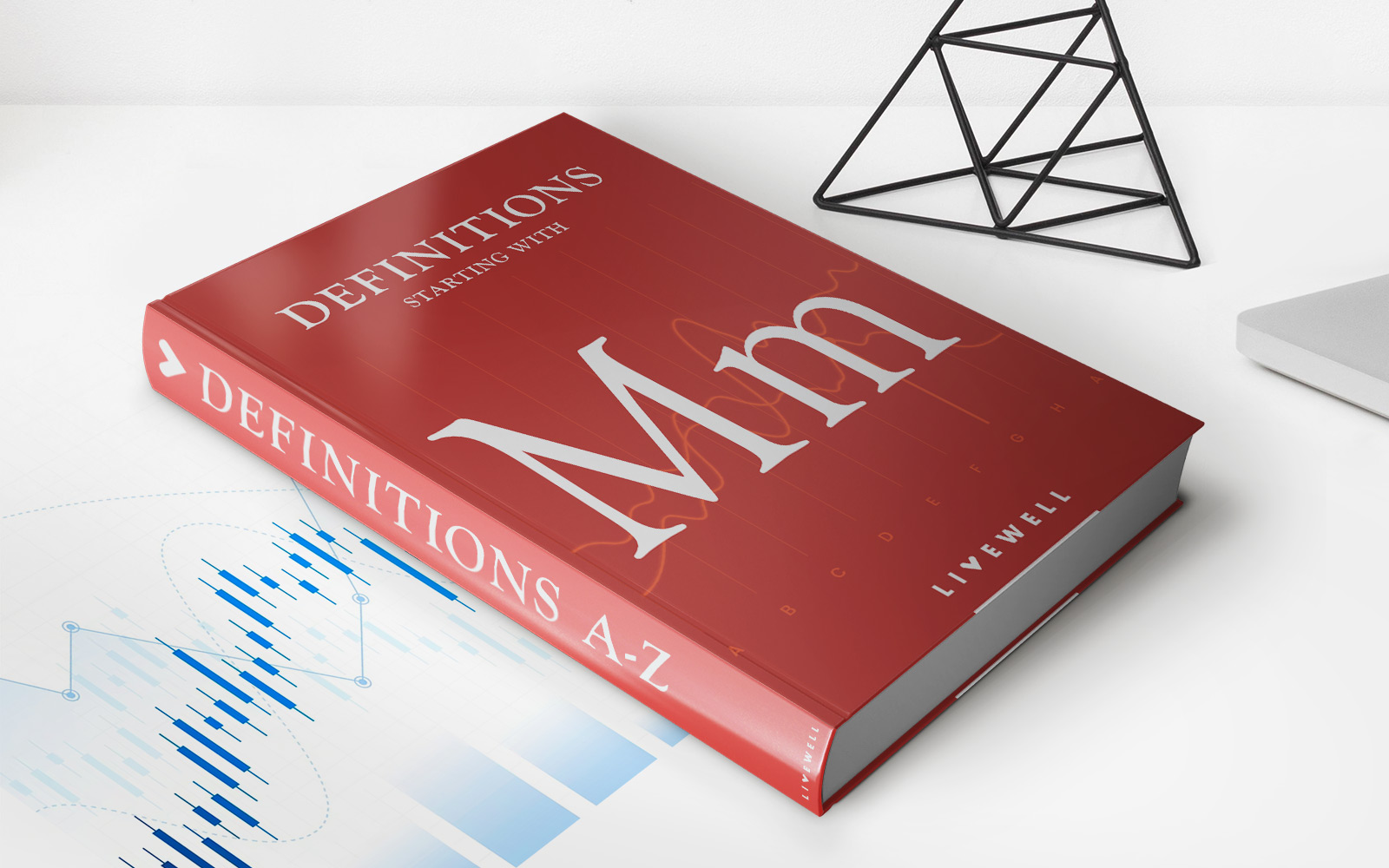Home>Finance>What Is A Nonforfeiture Option In Life Insurance?


Finance
What Is A Nonforfeiture Option In Life Insurance?
Published: October 15, 2023
Learn about nonforfeiture options in life insurance and how they can impact your financial future. Discover how these options can help protect your investment and provide flexibility in your insurance policy.
(Many of the links in this article redirect to a specific reviewed product. Your purchase of these products through affiliate links helps to generate commission for LiveWell, at no extra cost. Learn more)
Table of Contents
Introduction
In the world of life insurance, planning for the future is crucial. Life insurance policies offer financial protection to your loved ones in the event of your untimely demise. They provide a sense of security and peace of mind, ensuring that your dependents are taken care of even if you’re no longer around.
However, life is unpredictable, and circumstances may change over time. While purchasing a life insurance policy, it’s essential to consider various factors that can impact your coverage in the future. One such factor is the nonforfeiture option.
A nonforfeiture option is a provision in a life insurance policy that helps policyholders retain some value from their policy in case they decide to surrender it or discontinue premium payments. This option allows policyholders to keep a portion of the benefits they have accumulated in the policy, even if they choose not to continue paying premiums or terminate the policy.
In this article, we will explore the concept of nonforfeiture options in life insurance, the different types available, and the benefits they offer. By understanding these options, you can make informed decisions when it comes to managing your life insurance policy.
Definition of Nonforfeiture Option
A nonforfeiture option, also known as a surrender value option, is a provision in a life insurance policy that allows policyholders to retain some value from their policy if they decide to surrender it or stop paying premiums. This option prevents policyholders from losing all the money they’ve invested in their policy.
When you pay premiums for a life insurance policy, a portion of those premiums goes towards the policy’s cash value. The cash value is the savings component of a permanent life insurance policy, which accumulates over time. It grows through investment gains and part of the premiums paid.
If you find yourself in a situation where you can no longer afford the premiums or no longer need the coverage, a nonforfeiture option enables you to avoid losing the entire policy’s value. Instead, you have the option to receive a surrender value or convert your policy into another form of insurance, depending on the specific nonforfeiture option available in your policy.
It’s important to note that nonforfeiture options typically apply to permanent life insurance policies, such as whole life or universal life insurance, rather than term life insurance. Term life insurance policies do not usually have a cash value component, making nonforfeiture options less relevant.
Types of Nonforfeiture Options
There are several types of nonforfeiture options available in life insurance policies. These options vary in how they allow policyholders to retain value from their policy while discontinuing premium payments. Let’s explore three common types of nonforfeiture options:
- Cash Value Nonforfeiture Option: With this option, the policyholder can surrender the policy and receive the cash value accumulated within the policy. The cash value is the amount of money the policyholder is entitled to after deducting any outstanding loans, fees, or penalties. The policyholder receives this amount in cash and terminates the policy.
- Reduced Paid-Up Insurance Nonforfeiture Option: This option allows the policyholder to stop paying premiums but still maintain coverage. Instead of surrendering the policy, the cash value is used to purchase a paid-up insurance policy of a reduced face amount. The reduced paid-up policy remains in force for the remainder of the policyholder’s life, but the death benefit is reduced compared to the original policy.
- Extended Term Insurance Nonforfeiture Option: With this option, the policyholder can cease making premium payments and convert the cash value into a term insurance policy with the same face amount as the original policy. The length of the term policy is based on the cash value at the time of conversion and the policyholder’s attained age. The term policy remains in force for a specified period, usually until the policyholder reaches a certain age or the term expires.
These nonforfeiture options offer flexibility to policyholders, allowing them to make choices based on their financial circumstances, coverage needs, and long-term goals. Each option has its own advantages and considerations, and it’s crucial to understand the details and implications of each nonforfeiture option before making a decision.
Cash Value Nonforfeiture Option
The cash value nonforfeiture option is one of the most straightforward options available to policyholders. With this option, if the policyholder decides to surrender the policy or stop paying premiums, they can receive the cash value accumulated within the policy.
The cash value represents the savings component of a permanent life insurance policy, such as whole life or universal life insurance. It grows over time through investment gains and a portion of the premiums paid by the policyholder. The cash value can be used as a source of funds for various purposes.
When exercising the cash value nonforfeiture option, the policyholder contacts the insurance company and requests the surrender of the policy. The insurance company calculates the cash value by deducting any outstanding policy loans, fees, or penalties from the total accumulated cash value.
The policyholder can receive the cash value in one of several ways:
- As a lump sum payment: The policyholder receives the entire cash value amount in a single payment.
- As annuity payments: The insurance company converts the cash value into an annuity that provides a regular stream of income to the policyholder for a specified period or for the rest of their life.
- As a combination of both: The policyholder can choose to receive a portion of the cash value as a lump sum payment and use the remaining amount to purchase an annuity.
It’s important to note that surrendering the policy and receiving the cash value terminates the insurance coverage. Therefore, if the policyholder still requires life insurance, they will need to secure a new policy.
Before opting for the cash value nonforfeiture option, it’s crucial to consider the long-term financial implications. Surrendering the policy means forfeiting the death benefit protection, which may be needed to financially protect loved ones in the event of the policyholder’s death. Additionally, surrendering the policy may have tax implications, especially if the cash value exceeds the total premiums paid.
Choosing the cash value nonforfeiture option requires careful consideration of the policyholder’s financial goals, overall insurance needs, and other available options. It is advisable to consult with a financial advisor or insurance professional to fully understand the implications and make an informed decision.
Reduced Paid-Up Insurance Nonforfeiture Option
The reduced paid-up insurance nonforfeiture option is a valuable choice for policyholders who want to maintain some form of life insurance coverage without paying additional premiums. With this option, instead of surrendering the policy, the policyholder can use the accumulated cash value to purchase a paid-up insurance policy of a reduced face amount.
When a policyholder exercises the reduced paid-up insurance nonforfeiture option, the cash value is used as a single premium payment for a new policy. The new policy has a smaller face amount, meaning the death benefit is reduced compared to the original policy. However, the policyholder no longer needs to pay future premiums to keep the policy in force.
With this nonforfeiture option, the policyholder retains some level of life insurance coverage even if they are unable or no longer wish to pay premiums. The reduced paid-up policy remains in force for the duration of the policyholder’s life, as long as the premiums have been paid up to that point.
It’s important to note that the reduced paid-up insurance policy may have different terms and conditions compared to the original policy. The premiums are no longer required, but the death benefit is reduced accordingly. The policyholder should carefully review the terms of the new policy and ensure that the reduced coverage still meets their needs and financial goals.
One potential advantage of the reduced paid-up insurance nonforfeiture option is the ability to maintain some level of life insurance protection without the need to pay additional premiums. This can be beneficial for policyholders who are facing financial difficulties or have changed circumstances that make it challenging to continue paying premiums at the original level.
However, it’s important to consider the reduced death benefit and assess whether it is sufficient for the policyholder’s intended beneficiaries. If the coverage is deemed inadequate, the policyholder may need to explore other options, such as purchasing an additional policy or exploring alternatives for maintaining the desired level of protection.
Before exercising the reduced paid-up insurance nonforfeiture option, it is advisable to consult with a financial advisor or insurance professional to fully understand the implications and evaluate alternative solutions. This will ensure that the decision aligns with the policyholder’s long-term insurance and financial goals.
Extended Term Insurance Nonforfeiture Option
The extended term insurance nonforfeiture option provides policyholders with an alternative to maintaining life insurance coverage without having to pay additional premiums. With this option, the policyholder can stop paying premiums and convert the cash value of the policy into a term insurance policy with the same face amount as the original policy.
When opting for the extended term insurance nonforfeiture option, the insurance company uses the cash value to purchase a new term policy. The length of the term policy is determined based on the cash value at the time of conversion and the policyholder’s attained age. The term policy remains in force for a specified period, typically until the policyholder reaches a certain age or the term expires.
This nonforfeiture option allows the policyholder to maintain life insurance coverage for a defined period without the need to continue paying premiums. The policyholder can rest assured that during the term of the new policy, their beneficiaries will receive the death benefit if they pass away.
It’s important to note that the extended term insurance nonforfeiture option may result in a change in the type of policy and the associated premiums. The premiums for the new term policy will typically be higher compared to the premiums of the original policy. The policyholder should carefully review the terms and conditions of the new policy, including the premium amounts, to ensure they align with their budget and coverage needs.
One advantage of the extended term insurance nonforfeiture option is the ability to extend the coverage period without incurring additional expenses. The policyholder can maintain life insurance protection for a specified period while evaluating their long-term insurance needs and financial situation.
However, it’s important to consider that the extended term coverage is temporary and will eventually expire. If the policyholder wishes to have permanent life insurance beyond the term period, they may need to explore other options, such as converting the policy to a new permanent life insurance policy or purchasing an additional policy.
Before exercising the extended term insurance nonforfeiture option, it is advisable to consult with a financial advisor or insurance professional to fully understand the implications and assess alternative solutions. This will ensure that the decision aligns with the policyholder’s long-term insurance and financial goals.
Benefits of Nonforfeiture Options
Nonforfeiture options in life insurance policies offer several important benefits to policyholders. These options provide financial flexibility, protect the value of the policy, and ensure that policyholders can maintain some level of coverage even if they can no longer afford to pay premiums. Let’s explore the key benefits of nonforfeiture options:
- Retaining Policy Value: The primary benefit of nonforfeiture options is the ability to retain a portion of the policy’s value. Regardless of the specific nonforfeiture option chosen, policyholders can prevent their investment from being completely lost if they decide to surrender the policy or stop paying premiums. This can provide a sense of security and help protect the funds they have accumulated over time.
- Continued Coverage: Nonforfeiture options allow policyholders to maintain some level of life insurance coverage even if they can no longer afford to pay premiums or no longer wish to continue with the original policy. The reduced paid-up insurance and extended term insurance options ensure that beneficiaries will still receive a death benefit if the policyholder passes away during the coverage period.
- Flexibility: Nonforfeiture options provide flexibility in managing life insurance policies. They acknowledge that circumstances may change, and policyholders may need to make adjustments without facing significant financial loss. By offering different options, policyholders can choose the one that aligns best with their financial goals, whether it’s surrendering the policy for immediate cash value, maintaining reduced coverage, or converting to a term policy.
- Protection Against Lapse: Nonforfeiture options help prevent policies from lapsing due to non-payment of premiums. Life insurance is designed to provide protection for beneficiaries, and having nonforfeiture options in place ensures that policyholders can maintain coverage even during difficult financial periods. This can be especially valuable if the policyholder’s health has changed and obtaining new coverage may be challenging or more expensive.
- Peace of Mind: Ultimately, nonforfeiture options offer policyholders peace of mind. Life is full of uncertainties, and knowing that there are options available to protect the value of their life insurance policy provides a sense of security. Policyholders can make informed decisions about their coverage, knowing that they have choices that can meet their changing needs and financial situations.
It’s important for policyholders to review their life insurance policies and understand the specific nonforfeiture options available to them. By considering these benefits, policyholders can make informed decisions about managing their life insurance coverage and protecting their financial well-being.
Considerations for Choosing a Nonforfeiture Option
When selecting a nonforfeiture option for your life insurance policy, there are several considerations to keep in mind. These factors will help you make an informed decision that aligns with your financial goals and priorities. Here are some key considerations to take into account:
- Financial Situation: Assess your current financial circumstances, including your ability to pay premiums and any immediate cash needs. Consider whether surrendering the policy for its cash value or converting it to a nonforfeiture option makes the most sense given your financial goals and obligations.
- Insurance Needs: Evaluate your insurance needs to determine the appropriate nonforfeiture option. Consider the amount of coverage required to protect your beneficiaries and whether the reduced coverage offered by a nonforfeiture option is sufficient. If the original policy no longer meets your needs, you may consider converting to a different policy type or exploring other insurance options.
- Long-Term Goals: Consider your long-term objectives and how the chosen nonforfeiture option fits into your overall financial plan. Ensure that the decision aligns with your future insurance coverage needs and financial expectations.
- Tax Implications: It’s important to understand any potential tax implications associated with surrendering the policy or converting to a nonforfeiture option. The cash value gained from surrendering the policy may be taxable, and the conversion to a new policy could have tax consequences. Consult with a tax advisor to fully understand the tax implications and potential consequences of your chosen nonforfeiture option.
- Policy Details: Review the specific terms and conditions of your policy, including any restrictions or limitations on nonforfeiture options. Understand the impact of each option on the death benefit, premiums, and potential changes to the policy type.
- Consultation: Seek guidance from a financial advisor or insurance professional who can provide expert advice tailored to your specific situation. They can help you understand the nuances of each nonforfeiture option and assess which one best suits your needs and goals.
Remember, the choice of a nonforfeiture option should be based on a comprehensive evaluation of your individual circumstances and preferences. It’s important to weigh the potential benefits, consequences, and long-term implications of each option to make an informed decision that aligns with your insurance and financial objectives.
Conclusion
Nonforfeiture options in life insurance policies provide policyholders with valuable choices when faced with the decision to surrender their policy or stop paying premiums. These options allow policyholders to retain some value from their policies and maintain coverage in different forms without incurring additional costs.
Throughout this article, we have explored the various types of nonforfeiture options, including the cash value nonforfeiture option, reduced paid-up insurance nonforfeiture option, and extended term insurance nonforfeiture option. Each option offers unique benefits and considerations that policyholders should carefully evaluate based on their specific circumstances.
Nonforfeiture options not only provide financial flexibility but also offer peace of mind, knowing that a portion of the policy’s value can be preserved and that some level of coverage can be maintained. However, it’s crucial to thoroughly understand the terms, conditions, and potential tax implications associated with each option before making a decision.
When considering a nonforfeiture option, it’s advisable to consult with a financial advisor or insurance professional who can provide personalized guidance based on your financial goals and needs. They can help you assess the available options and determine the best course of action for your unique situation.
In conclusion, nonforfeiture options offer policyholders the opportunity to make informed choices regarding their life insurance policies. By understanding these options and carefully considering the benefits and considerations, you can make decisions that align with your long-term financial goals and provide security for yourself and your loved ones.














